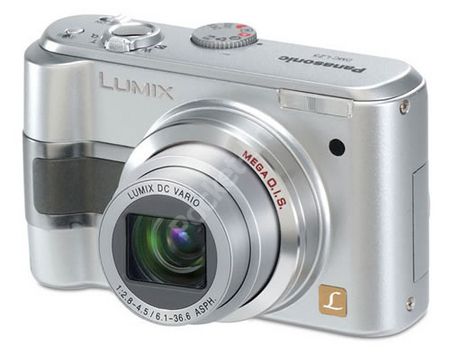Panasonic has been working hard to build market share and its Lumix compacts are becoming very accomplished pieces of photo gear indeed. As I write Panasonic has even announced a new digital SLR so the company is not resting on its laurels.
Our quick take
The Lumix LZ5 looks basic but it actually plays host to some nice features such as image stabilisation, exposure bracketing and a burst shooting modes, among many others. Image quality is good to fair at higher sensitivity settings (up to 1600 ISO) and the price is good as well. If you want a basic, simple to use camera with a bit more to offer - along with nice image quality, then the LZ5 is surely work a look.

Panasonic Lumix DMC LZ5 digital camera - 4.0 / 5
| FOR | AGAINST |
|---|---|
|
|
That ethos is reflected in the Lumix DMC LZ5 tested here. It might have a fairly bland style and be a blocky in the hand, but despite these things it features a great range of subject program modes, a 6MP sensor providing enough pixels for a prints up to and over A3 in size, optical image stabilisation (MEGA OIS as Panasonic calls it), a 1600-ISO high sensitivity mode plus point and shoot and manual controls catering for both the snapper or more enthusiast user.
It also comes at a great price (around £230) so makes a lip smacking proposition for those on a tighter budget looking for a simple to use but high resolution and spec camera.
Menus and settings inside the camera's workings have nice information panels that can guide you along if you're not sure what a particular feature is or does, while the camera's external body controls are traditionally placed and not to complex to use.
Here the camera's larger size aids those with bigger hands and enables a nice big 2.5-inch screen to grace the back plate. It's bright, easy to use and it has a High Angle setting that makes the camera easier to use held at a, well, higher angle, say over your head when shooting above a crowd of people.
The top plate houses the main mode dial that gets you to the main shooting modes, which include macro, 640x480-pixel, 30fps video with audio, a power saving Economy setting, dual Scene modes (so that you can preset to favourite modes, one applied to each of the modes from the many available; see below), playback and a Simple mode, signified by a small red heart icon on then mode dial that is the camera's basic point and shoot all auto mode.
There are 14 Scene modes available in menus once the Mode dial is set to one of the two Scene settings on the mode dial. You can pre-assign one scene mode to each of the mode dial's two Scene positions so that you can quickly customise it to your two favourite modes, say landscape and party for example.
Interestingly the LZ5 also features a Starry Sky mode where the shutter speed settings can be set to 15, 30 and 60 second intervals, a High Sensitivity setting for low light shooting (though noise is pretty intrusive in this mode) and there are two baby modes that let you shoot shots optimised for skin tones and that let you add a birth date to the shot too.
Image stabilisation helps reduce camera shake no matter what your doing, it helps when using the camera's F2.8-F4.5, 6x optical zoom which gives the 35mm equivalent of 37mm to 222mm focal length range. My one bugbear here is the rather limited wide-angle end of the zoom. On the plus side, the camera's capture aspect ratio can be altered from the default 4:3, through 3:2 to the widescreen 16:9 ratios. Combined with lower resolution settings, which reduce the area of the CCD used to image it, it effectively increases the optical zoom focal length to 8.3x in the 3MP mode for example.
Power is courtesy of two AA cells in slots beneath a flap on the underside of the camera. Images are saved onto external SD/MMC storage housed under a flap on the LZ5's side. Image quality is good with the high sensitivity modes ramping up noise rather too much for my liking. Just two JPEG quality settings seem meager as well but the top quality setting does a grand job overall.
To recap
A good lens image stabilisation and plenty of detail from the 6-megapixel sensor provides great image quality too
